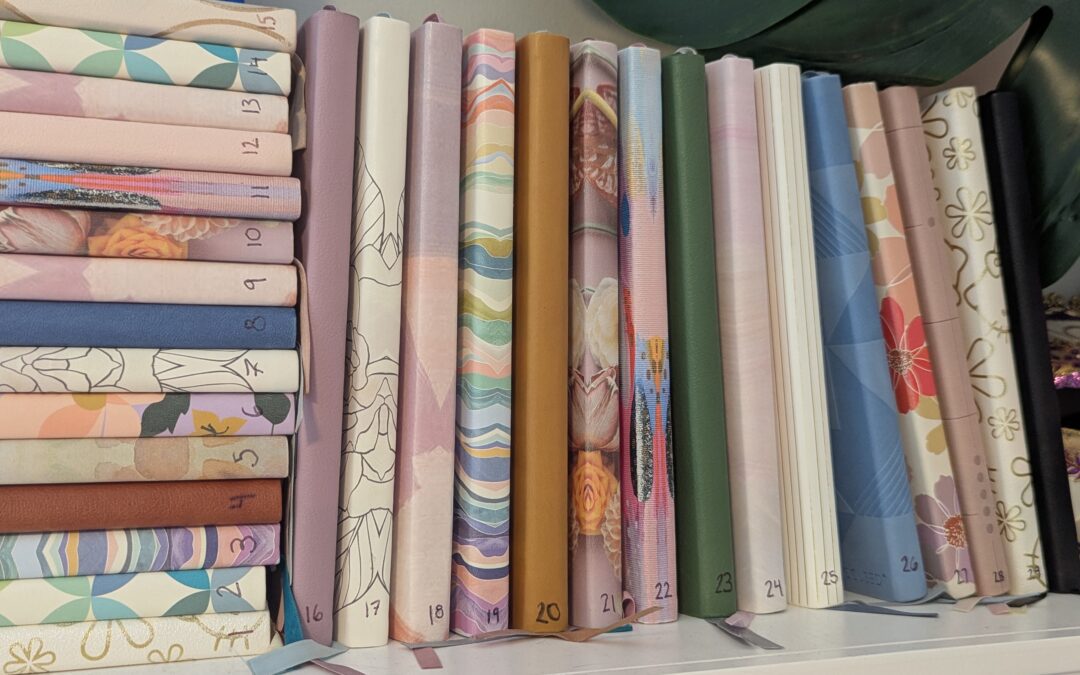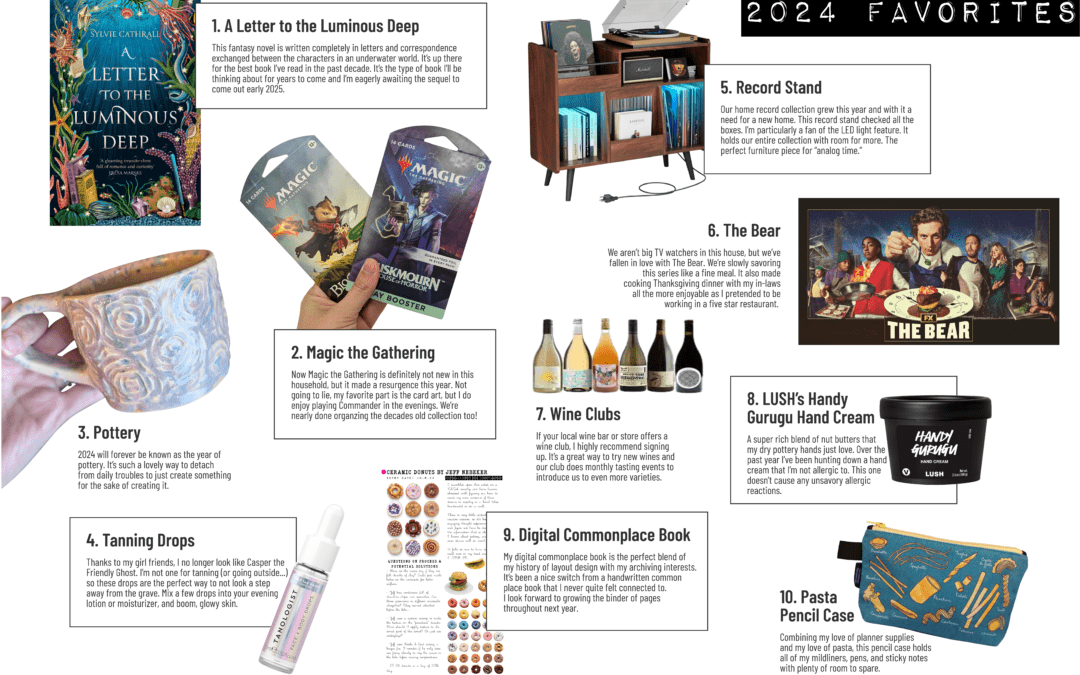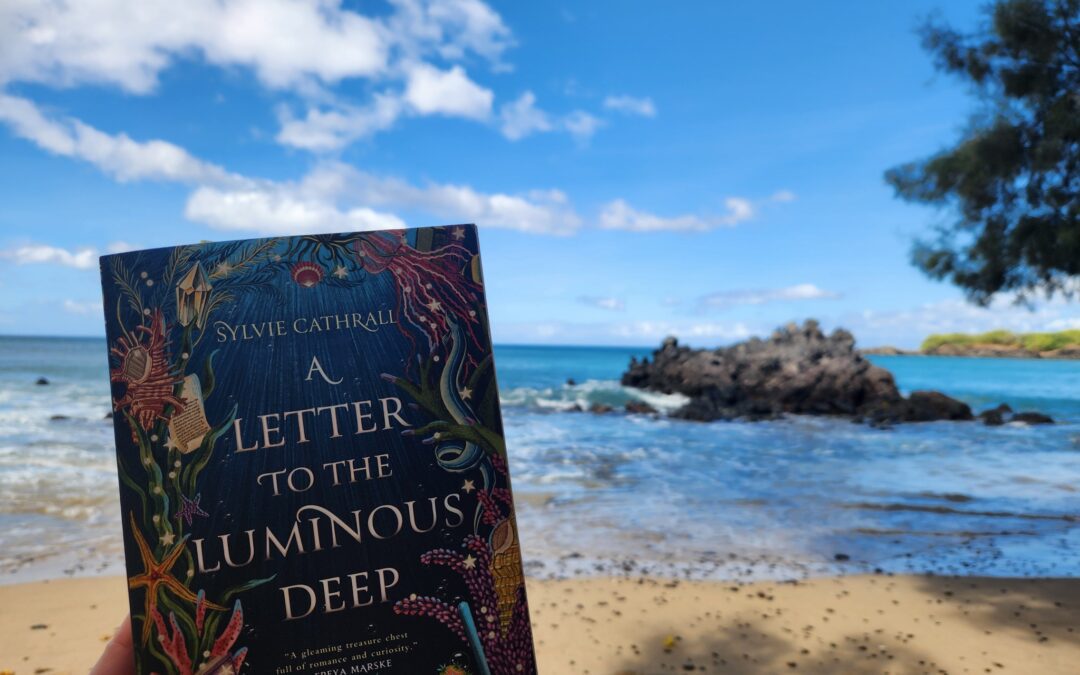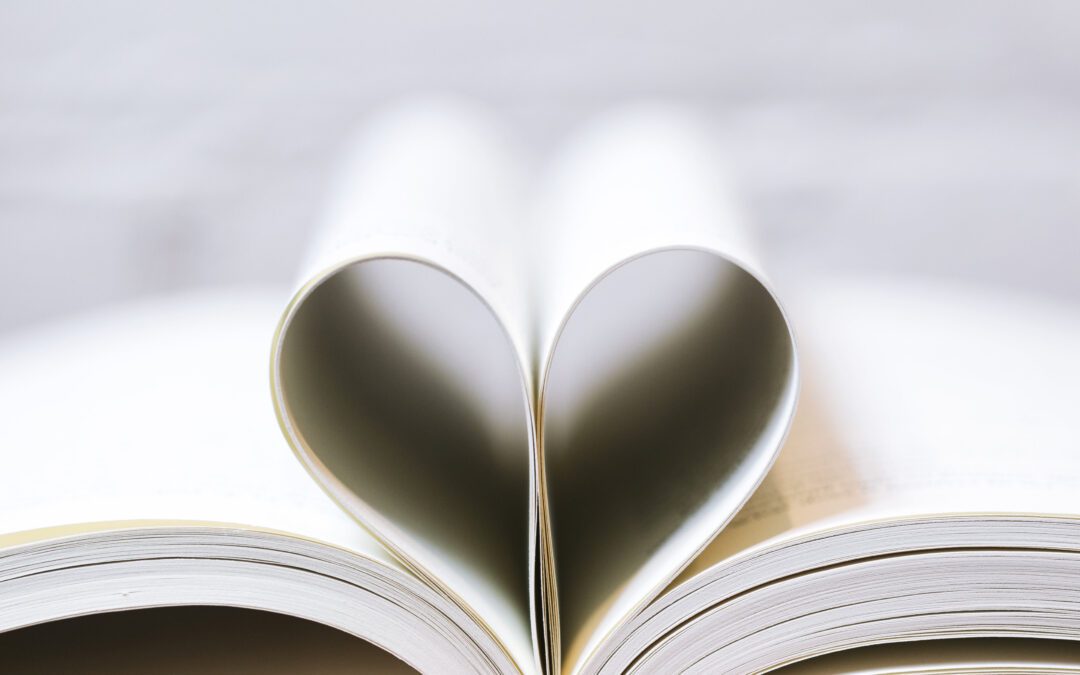
How to Develop a Daily Journaling Practice (Without Burning Out or Getting Bored)
Journaling every day sounds lovely in theory. Just imagine sipping a warm cup of tea while pouring your thoughts onto the page. Turning that dreamy idea into a daily habit? That’s where most people get stuck.
If you’ve tried journaling before and dropped it after a few days (or bought the notebook, opened it once, and never went back), you’re not alone. I’ve been there. I’ve done that again and again. The stack of notebooks with only a few pages completed is testament to those failed attempts. Until one day I read the first chapter of The Artist’s Way, decided to give morning pages a go, and haven’t looked backed. Four years later and I’m still writing three pages every day. Maybe one day I’ll actually finish The Artist’s Way, but that’s a post for another day.
Daily journaling doesn’t have to be overwhelming or intimidating. Like any habit, it just takes a little intention, a little grace, and the right approach.
1. Start Small. Seriously.
You don’t have to write a page. Or even a paragraph. Give yourself permission to jot down just one sentence a day. Something as simple as “I felt calm after lunch” or “Today felt off, and I’m not sure why.” Starting small removes the pressure and builds consistency. You’ll find yourself naturally wanting to write more as you go.
But if you’re like me, setting a page goal pushes me to go deeper than just surface level recapping of my day. The three page requirement of morning pages is just long enough that I have to think about my thoughts and feelings to finish it off. I like the challenge, but if that feels daunting, start small and work your way up to it.
2. Pick a Time and Tie It to Something You Already Do
Habits stick better when they’re anchored to existing routines. Try journaling while your coffee brews, just before bed, or on your lunch break. Keep your journal somewhere visible so it becomes part of your rhythm, not an extra task to remember. The Artist’s Way requires them to be done first thing, but over the years I’ve found I quite enjoy checking back in with my journal half-way through the day. You’ll find you focus on different things depending on the time of day.
3. Use Prompts When You’re Stuck
Blank pages can be intimidating. Prompts can help. Try questions like:
-
What’s one thing I’m grateful for today?
-
What do I need more of right now?
-
What’s something I want to remember about today?
Prompts can spark reflection without requiring emotional heavy-lifting. They can also give a meditative cadence to your pages if you’re answering the same questions every journaling session.
4. Let Go of Perfection
Your journal is not a novel. No one is grading your grammar, spelling, or sentence structure. It’s a space for you to be raw, messy, honest. Don’t worry if it feels repetitive, scattered, or uninteresting. It’s the practice that matters. 30+ journals later and I know the bulk of them are me complaining about being hungry and/or tired.
5. Don’t Worry About Someone Reading It
One of the biggest barriers to journaling is the fear that someone might read it. This is your space. You can tear out pages, write in code, stash it in a drawer, or password-protect it. The point is not to write for someone else. The point is to be honest without needing to explain. Once you stop writing like someone might read it, the words come out clearer. They’re more real. And you get to feel the full relief of being unfiltered.
I always say that I put the crappiest version of myself into my pages, so I can be a better version of myself out of them.
6. Choose a Format That Fits You
Not a pen-and-paper person? Try a digital app, a voice memo, or even texting yourself. Journaling doesn’t have to look a certain way to count. The best format is the one you’ll actually use.
7. Be Kind to Yourself When You Miss a Day
Missing a day (or a week) doesn’t mean you failed. It means you’re human. Just pick it back up. Habits are built over time, not in perfect streaks. I missed my first entry while at Disneyland. We woke up early to rope drop, walked over 30,000 steps, and I had the beginnings of a cold brewing. The next morning I woke up (sick) and realized I never wrote the day before. I forgave myself, and grabbed my pen to update my journal on everything it missed. Your life is meant to be lived, first and foremost.
Journaling isn’t about having profound insights every day. It’s about building a quiet, consistent space where you can get to really know yourself. The more you show up, the more that space becomes familiar and maybe even something you look forward to.
So grab the pen, open the notes app on your phone or grab one of those gorgeous journals you have stashed for the perfect idea or occasion. I know you have one…and if not? What a great excuse to go to your local stationery shop to buy one…







